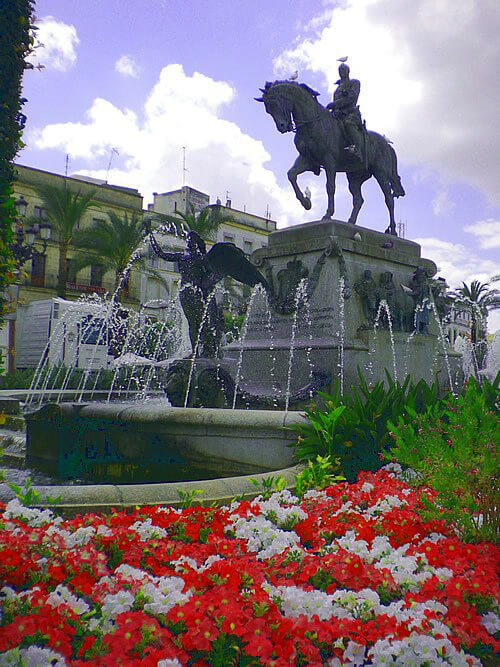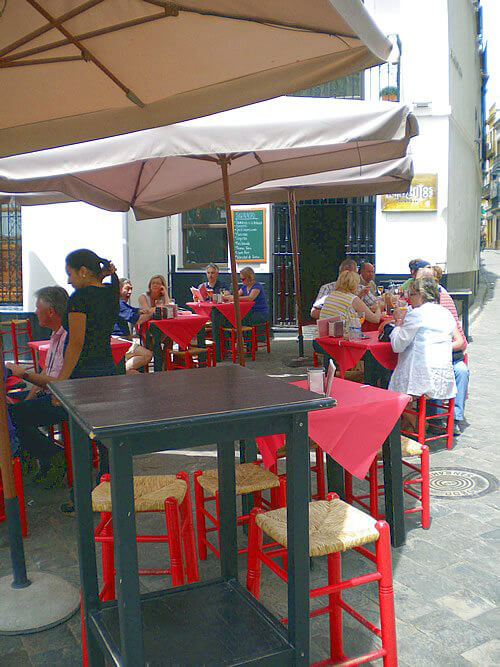Cultural Travel in the South of Spain
Experience a Wealth of Exciting Acitivites
Article and photo by Regina Winkle-Bryan
Spanish Schools in the South of Spain
After four and a half years living in Barcelona, my advice to those wanting to learn the Castilian language is simple: don’t come here. Barcelona is not the place to learn Spanish, because it has never been the mother tongue in this part of Spain. People here speak Catalan first, Spanish second, and English third. Plus, there are too many foreigners in Barcelona who speak English in cafes and at parties, making practicing your Castellano pretty impossible. Better to travel to the south of Spain if you are serious about learning to hablar Español.
There are many schools to choose from, but having been a Spanish student on and off for the last eight years, I like Giralda Center in old town Seville. The language academy has a lot of perks and offers many methods for students to grasp Castilian. The school also sets up host family stays, which makes practicing what you’ve learned each day in class a cinch.
If you’re not up for living in a communal environment, then Giralda Center also arranges stays in cozy appartments overlooking quaint plazas. One week of intensive Spanish classes at Geralda from 9 a.m. to 1 p.m. plus extra activities, costs €165, and 2 weeks of class with shared accommodations in an apartment or host family costs €400 (see their website for the various options). After class, practice your new grammar at Seville's many bars where scrumptious tapas are served free of charge with each beer ordered. Or take a guided tour of the lush gardens of the Alcazar in Spanish, and see how much you glean from the guide’s monologue. In the evenings, head to the cinema, and catch a flick in Spanish for extra listening practice.
Dance Schools
When people come to Spain to study, they are usually learning the language. However, if you already have some Español under your belt, then there are many other ways to learn about Spanish culture. Besides bull fighting, flamenco dance is probably the second thing people think of when they imagine the south of Spain. If you are blessed with rhythm or love to play guitar, then consider signing up for a course at Escuela Carmen de las Cuevas in Grenada
In addition to being a language school, the school offers courses in flamenco dance, guitar, and other aspects of this unique music at virtually all levels for adults.
Riding Horses

|
|
Statue in Jerez de la Frontera — known for its horse culture — in the South of Spain.
|
If you have two left feet, then maybe it’s best to head out of Seville, north, to Jerez de la Frontera. This former border town is known for two things: sherry wine and horses. In Jerez many ranches breed one of Spain’s most elegant horses, the Pura Raza Española, and apart from producing these beautiful steads, this area is also know for its many riding and dressage schools. More experienced riders can sign up for dressage classes with Centro Ecuestre 2002, located just a few miles outside of Jerez de la Frontera (€85 for two hours). The stables also have a Pony Club for kids who are just learning to ride. Pony Club is for 3 to 12 year old, who ride ponies not horses. A one month pass to the Pony Club is €45 for one class a week, four classes total. Private and intensive classes can be arranged.
Another Jerez option is the Centro Ecuestre Alcántara which leads four to six hour-long day-trips through shady cork tree groves to a historic farmhouse and bullring, where riders dismount and enjoy a picnic. These rides are led by stable owner Alfonso Lopez de Carrizosa, who speaks a bit of English. As do many ranches in Spain, Centro Ecuestre Alcántara also offers half-day ‘Horse Camp’ for kids, giving city-slicker children a taste of what life is like down on the farm. From 8 to 2 p.m., children care for their assigned horse, study riding theory and then take their steeds for a jaunt. Two weeks of Horse Camp costs €400 (check current prices). Centro Ecuestre Alcántara horses are mostly Pura Raza Española and Spanish-Arabic mixed horses.
Culinary Schools and Sherry Tasting

|
|
A bar in Sevilla.
|
Finally, the best way to learn about any culture is through its food and wine. The Spanish love to feast. Lunch lasts for at least two hours and involves many courses. Dinners on the weekend can go on all night. In a country where olive oil and wine are staples, eating and cooking is a pleasure. The south of Spain is known for its olives and also for its sherry. Jerez de la Frontera has an overwhelming number of sherry cellars open to the public offering tours, tasting, and a look at sherry vineyards.
Sherry producers Sandeman, Tio Pepe, and Garvey offer among the best for guided tours. Experience a sherry tour as well as many other regional culinary tours with A Taste of Spain . If you want to discover how to cook up some garlic squid to go with your bottle of dry sherry, consider culinary classes with A Taste of Spain. Students learn to shop for, prepare, and match wine to a traditional Spanish meal.
Regina Winkle-Bryan is a Barcelona-based freelance writer and photographer.
|
